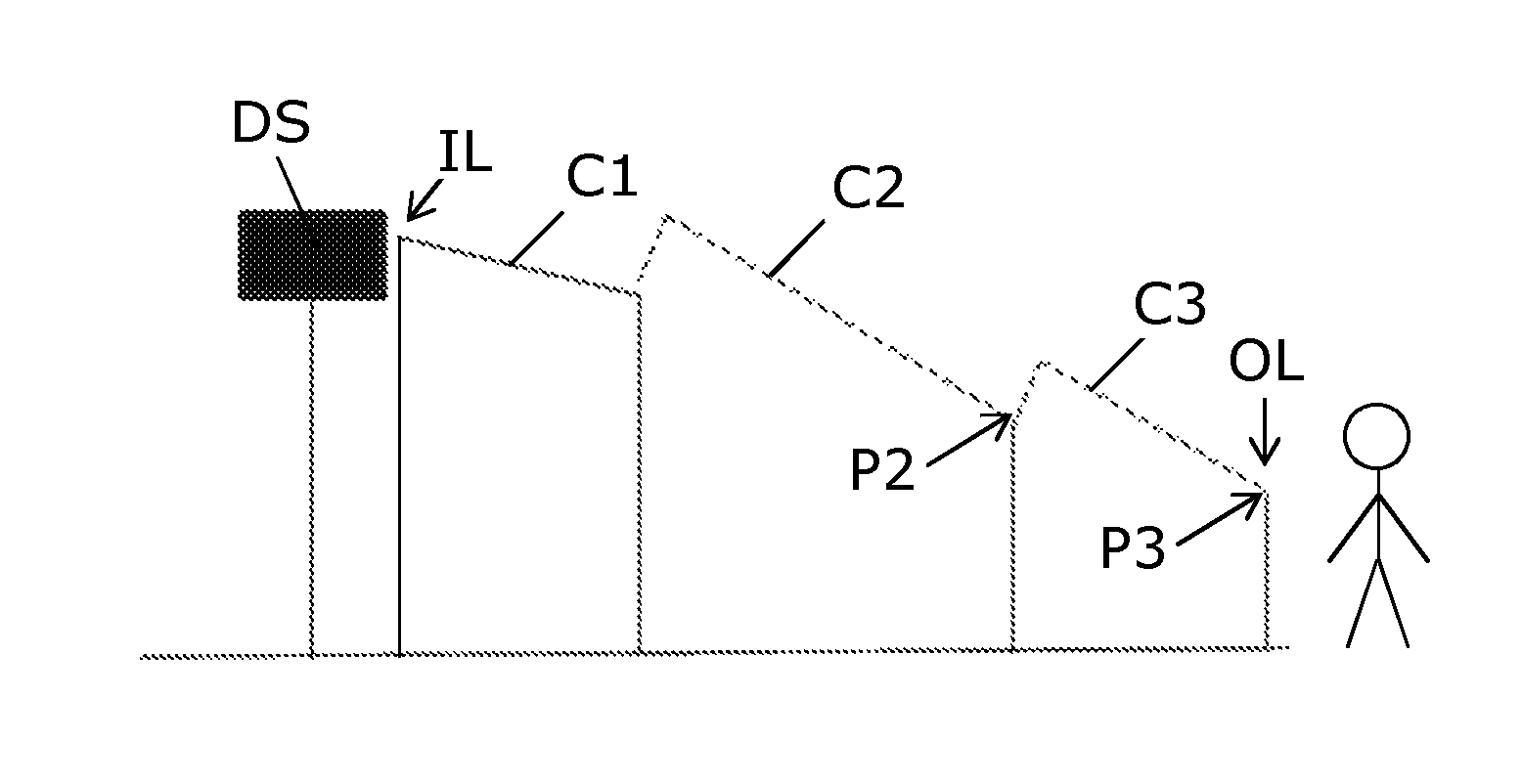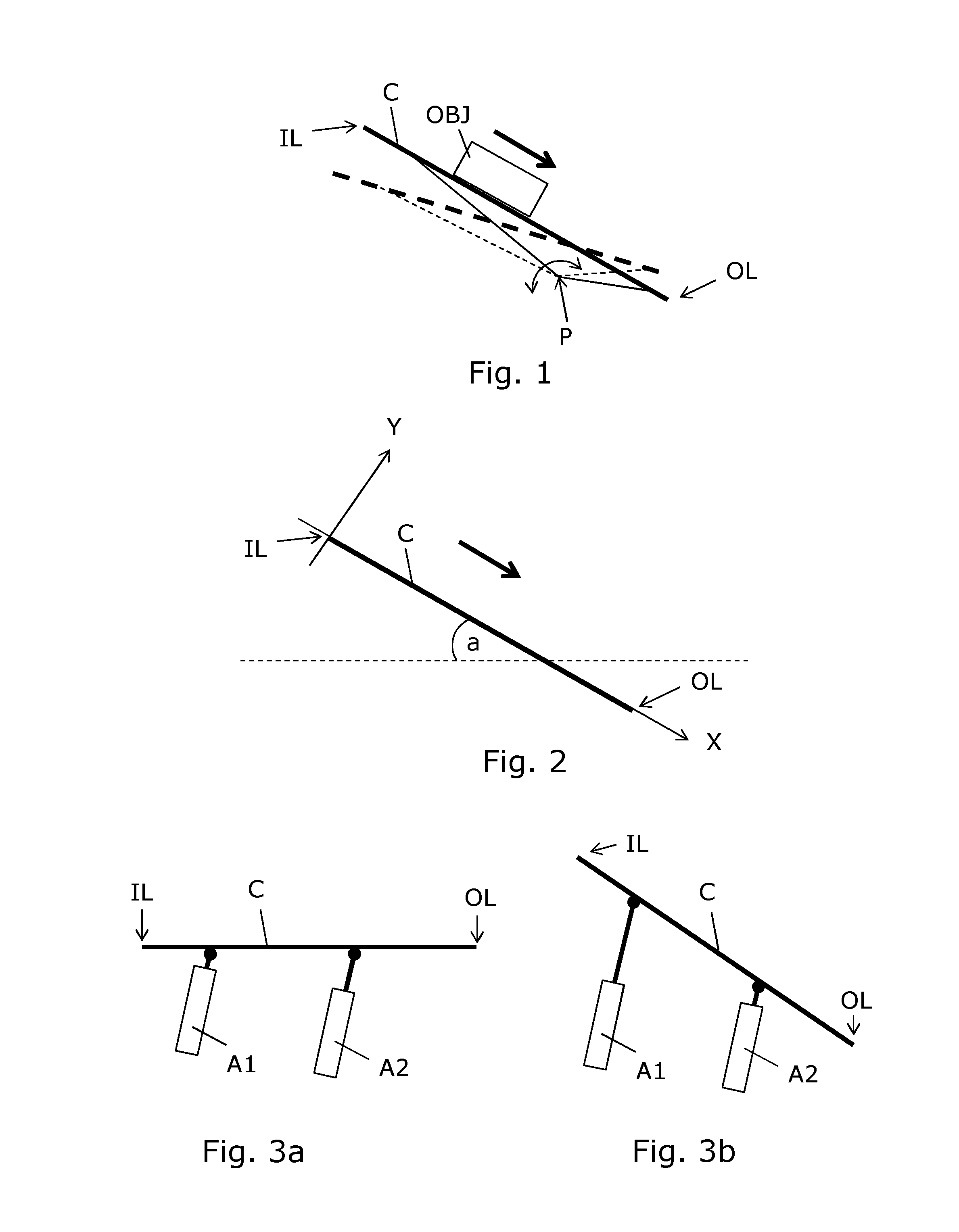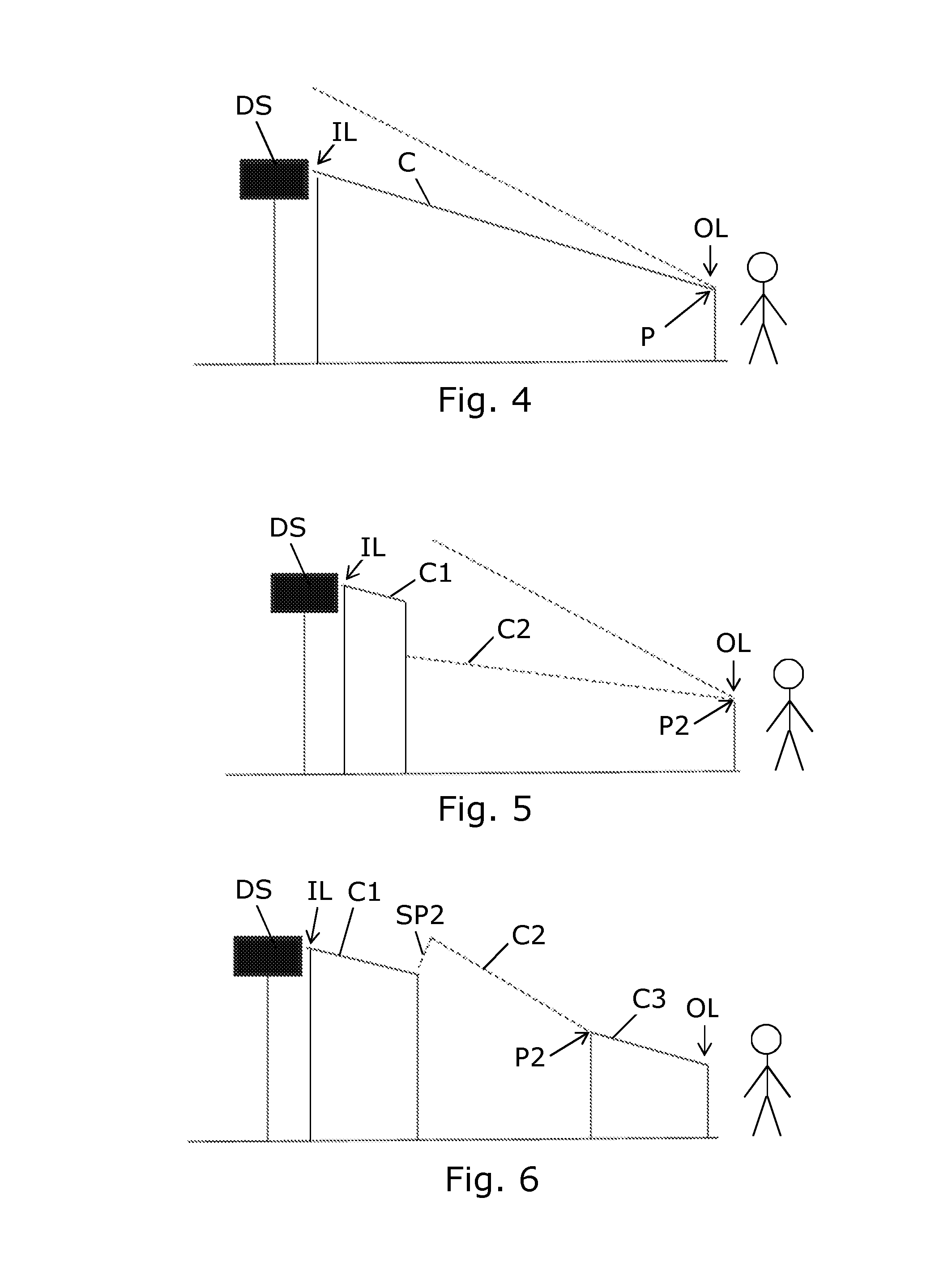Chute system with adjustable angle of inclination
a chute system and angle of inclination technology, applied in the direction of adaptive control, conveying parts, instruments, etc., can solve the problems of not being able to receive one or more additional objects, affecting the sorting system, and affecting the sorting effect, so as to reduce the angle of inclination, increase the vertical level, and reduce the inclination angle
- Summary
- Abstract
- Description
- Claims
- Application Information
AI Technical Summary
Benefits of technology
Problems solved by technology
Method used
Image
Examples
Embodiment Construction
[0055]FIG. 1 illustrates a side view sketch of a chute section embodiment in the form of a simple gravity chute with a planar chute surface C on which an object OBJ can slide from an inlet IL to an outlet OL in the direction indicated by the arrow. The chute surface C is connected to a structure which is hinged so as to allow pivoting around a pivot point P downstream of the inlet IL, thereby adjusting or changing the angle of inclination of the chute surface C. The dashed lines indicates the chute structure displaced by pivoting around the pivot point P into a position with a smaller angle of inclination. This is one way of providing a displacement of the inlet IL of the chute with respect to its vertical level. It is seen that the inlet IL of the solid version of the chute is at a higher vertical level than the inlet of the dotted version of the chute.
[0056]Displacement means (not shown) preferably comprising an actuator, is used to displace the chute structure between one angle o...
PUM
 Login to View More
Login to View More Abstract
Description
Claims
Application Information
 Login to View More
Login to View More - R&D
- Intellectual Property
- Life Sciences
- Materials
- Tech Scout
- Unparalleled Data Quality
- Higher Quality Content
- 60% Fewer Hallucinations
Browse by: Latest US Patents, China's latest patents, Technical Efficacy Thesaurus, Application Domain, Technology Topic, Popular Technical Reports.
© 2025 PatSnap. All rights reserved.Legal|Privacy policy|Modern Slavery Act Transparency Statement|Sitemap|About US| Contact US: help@patsnap.com



